Does photography really have a role to play in conservation, and if so how can it be done in a responsible way to make a difference? There are differing views on this but even if the effect is diminishing in a world saturated by images, that’s no reason to stop trying.
Matthew Williams-Ellis is a photographer and filmmaker specialising in travel and wildlife. Over the last two years he’s been working in Kenya to support the Mara Predator Conservation Programme on a project not just to photograph the Mara’s wildlife, but to observe and photograph the more individual behaviours. Through this project he has put together a exhibition – “Individuals” and a film. We interviewed Matthew about his work and conservation in the Masai Mara.
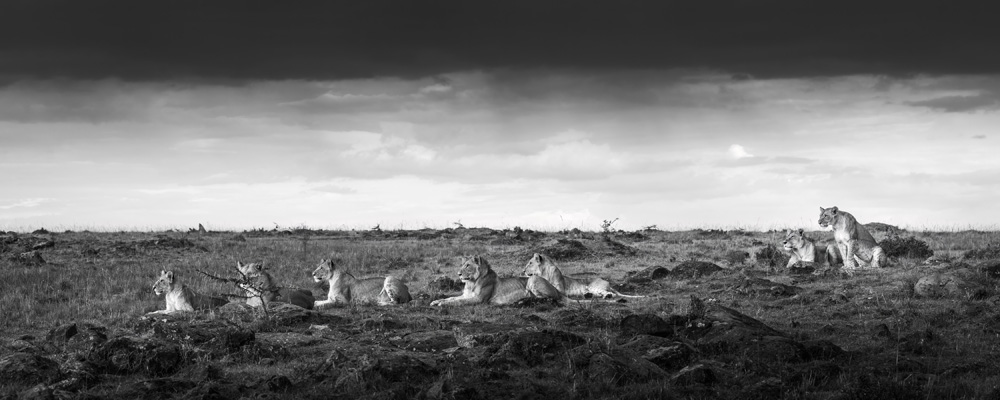
Conservation and responsible photography
“Conservation projects such as Mara Predator Conservation Programme’s ‘Collars for Conservation’ and the Frankfurt Zoological Society’s Serengeti De-Snaring Programme are vital in enabling wildlife to not just survive, but thrive. Where humans are present, there will always be some effect on the natural world and charities and organisations such as these are working tirelessly to get the balance right.”
Matthew believes photos and videos have the power to make a real difference, and this is something he strives to do with his work. “Being able to observe and capture photos of wildlife is a privilege. Beyond the importance of respecting your subjects while photographing, I believe it is vital to try to create change if future generations are to enjoy our wild spaces in the same way in years to come.”
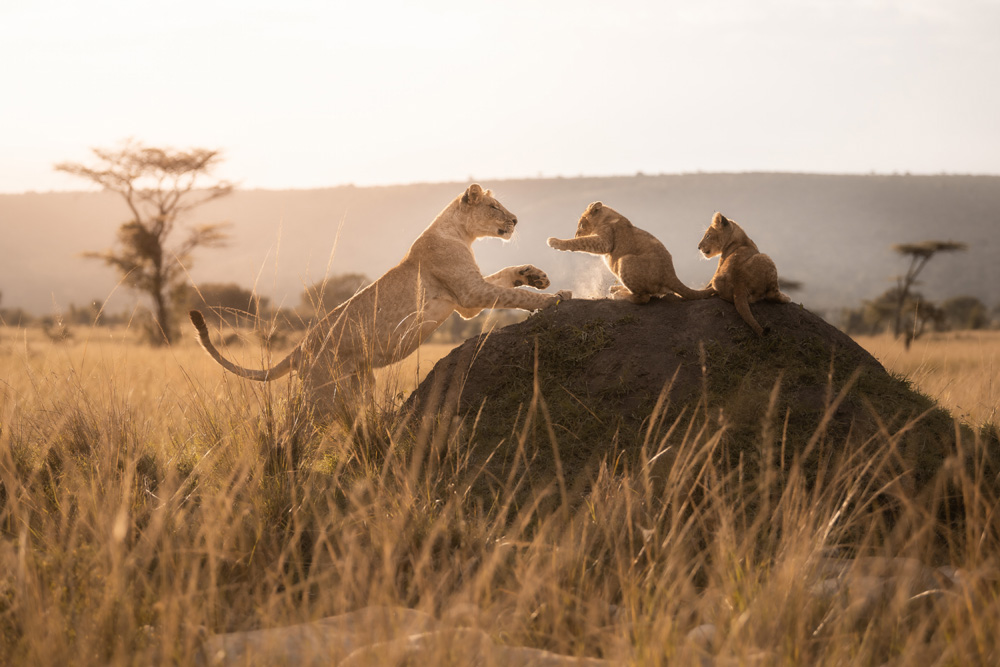
Through his exhibition, he is supporting Kenya Wildlife Trust’s Mara Predator Conservation Programme (MPCP) and the amazing work that they do in the Mara. Predators play a vital role in the ecosystem by regulating prey populations and maintaining the natural balance. However, human-wildlife conflicts and habitat loss threaten their survival. This can lead to the loss of prey populations, which predators rely on. In turn this can cause them to move into human settlements in search of food, and in particular cattle, which results in conflict.
MPCP seeks to understand how human-led changes affect predator movement and behaviour while increasing community awareness in the Greater Mara. Through their ‘Collars for Conservation’ initiative, they use GPS collars to monitor lions and provide data-driven solutions to identify human-wildlife conflicts before they take place. Whilst the human-wildlife conflict problem is becoming increasing recognised, MPCP stands out for its emphasis on community-driven conservation strategies, which involve working with local communities to reduce human-wildlife conflict and promote coexistence. On top of this, through wildlife clubs, MPCP educates school children about predator conservation, creating awareness and promoting a positive attitude towards them.
Mara North and the Conservancy Model
One of the positive things about Mara North is the conservancy model under which it is managed. The very limited number of camps in the area rent the land from the Maasai, meaning both the camps themselves and the local residents have the incentive to protect the wildlife that lives there. The conservancy model is all about trying to make tourism benefit wildlife, the Maasai and tourists alike.

Beyond just receiving rent to use the land, the Maasai benefit in other ways too. There are various schemes being tested by organisations such as the MPCP. For example, through tracking predator movements they’ve set up early warning systems so cattle herders know when lions are in the area. This kind is preventative action is key to finding ways for wildlife the thrive alongside human activity and minimise human-wildlife conflict problem.
For tourists (and of course photographers) visiting the area, the experience itself is enhanced too. With a maximum of five cars on a sighting, and the reality of often being completely alone with the wildlife, experiences feel much more raw.
Why hold an exhibition?
For Matthew, printing photos and taking them from the digital world into a finished piece of artwork in the physical world is one of the most enjoyable and artistic parts of the photography process. The impact that a 1.5m tall lion portrait has also helps convey the feeling of immense respect and awe that coming face to face with a lion creates.
‘Individuals’ focuses on telling the personal stories of the animals who live in the Maasai Mara in Kenya. By highlighting these unique, personal stories and showing animals to be emotional individuals rather than just an anonymous statistic in a wider population, I hope to promote a desire to protect and care for this precious wildlife.
When was the project photographed?
This collection was captured over the course of a month at Alex Walker’s Serian, a tented camp in Mara North Conservancy in Kenya in 2022. Spending time with the same individuals every day for over a month, their unique characteristics, personalities, behavioural patterns, and displays of emotion became increasingly apparent. For example, it isn’t just the markings that differentiates one lion from the next. It is the way an individual behaves and how he or she interacts with other pride members.
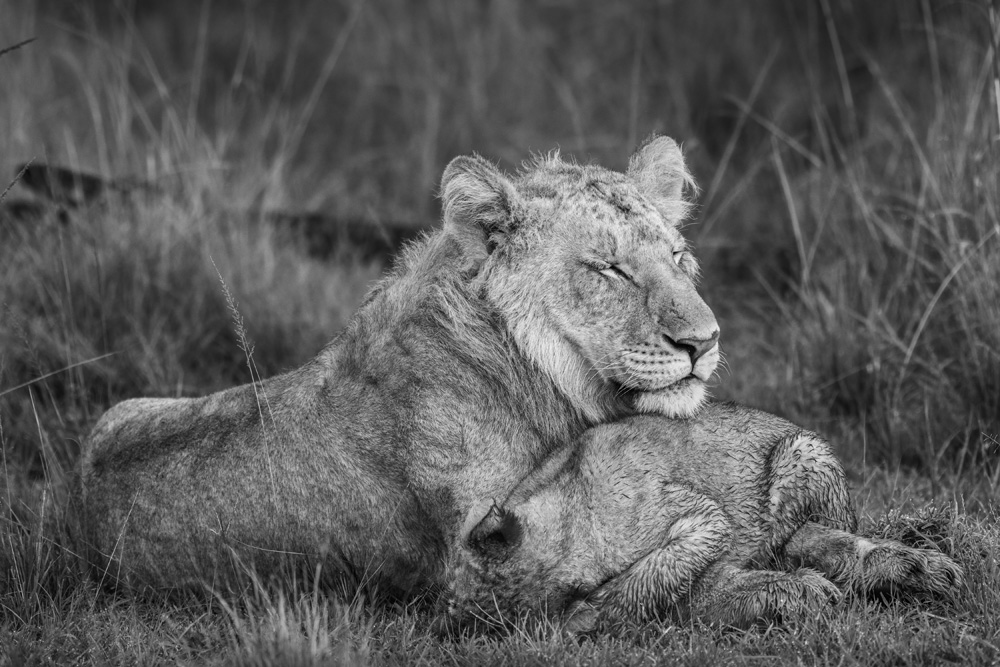
One such display of emotion came from the Marsh Pride, who are one of the main subjects in the collection. In the days after Lola (one of the Marsh Pride lionesses) loses one of her litter of two cubs, there is a noticeable closeness among them, spending more time than usual rubbing heads and keeping the final remaining cub close.



Similarly, Mara North is not just home to ‘cheetah’, it is home to “Kweli”, first time mother to three 11-month-old cubs. She is a strong, attentive and determined individual, singularly focused on finding the next meal for her hungry cubs and preparing them for their departure from her in the not too distant future.
What aspects of the project were planned in advance?
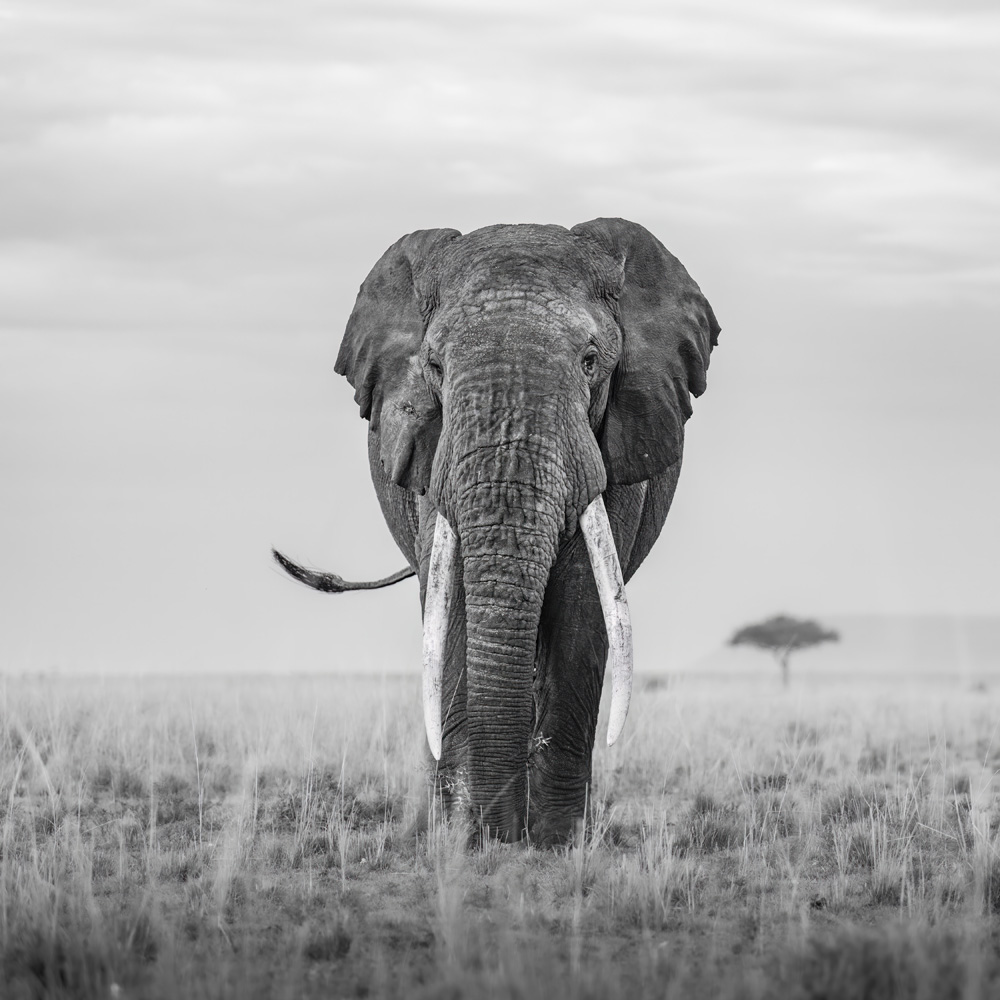
Before the project started, Matthew knew roughly the approach he was going to take and the style he wanted to go for. He knew he wanted to create shots that felt intimate, as well as seeking unique, inimitable moments, beautiful light, and above all photographs that reveal an aspect of the subject’s character.
One thing Matthew did to help create intimate shots was to use a shorter lens wherever possible. Using a shorter lens puts the viewer right there next to the subject. Sometimes when using an extremely long telephoto lenses, the subject can feel slightly detached with the resulting image having less impact.
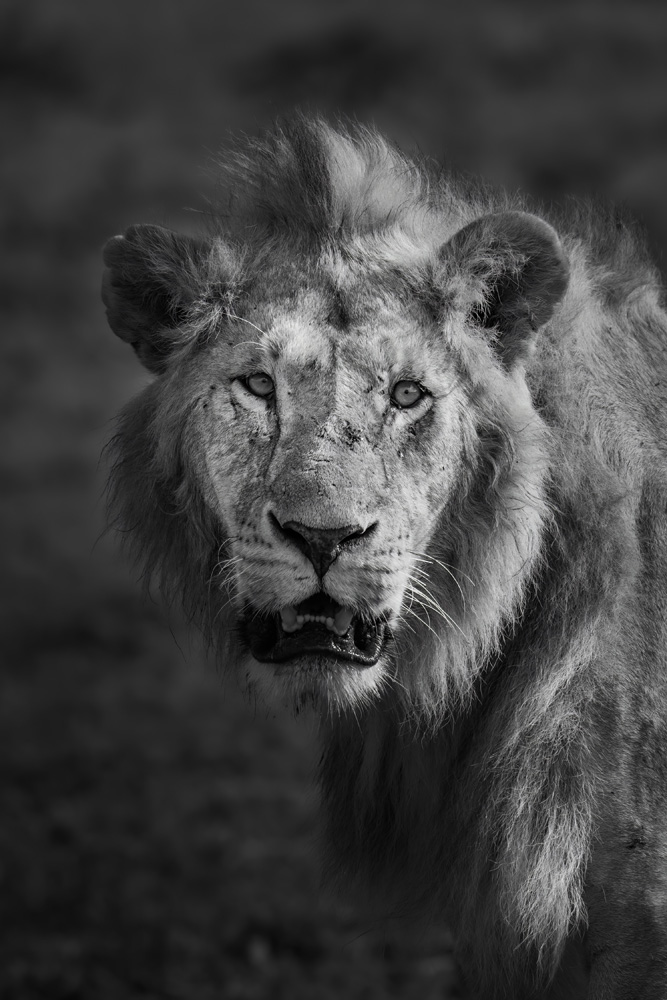
The other important factor he consider in trying the create intimate photographs is getting down to the eye level of the subject. When photographing from too high, it can feel a lot like a ‘human-eye-view’ and the background tends to be the ground just a few meters behind the animal which can make the image feel cluttered. Getting low down means the background is much further off and creates a much stronger bokeh effect which is what he looked for. In order to achieve this, Matthew used a low open-sided vehicle. When lying across the front two seats he was able to get right down to the eye level of my subject even when capturing photographs of characters such as Half Tail, a large male lion with a notorious reputation for having an aggressive streak!
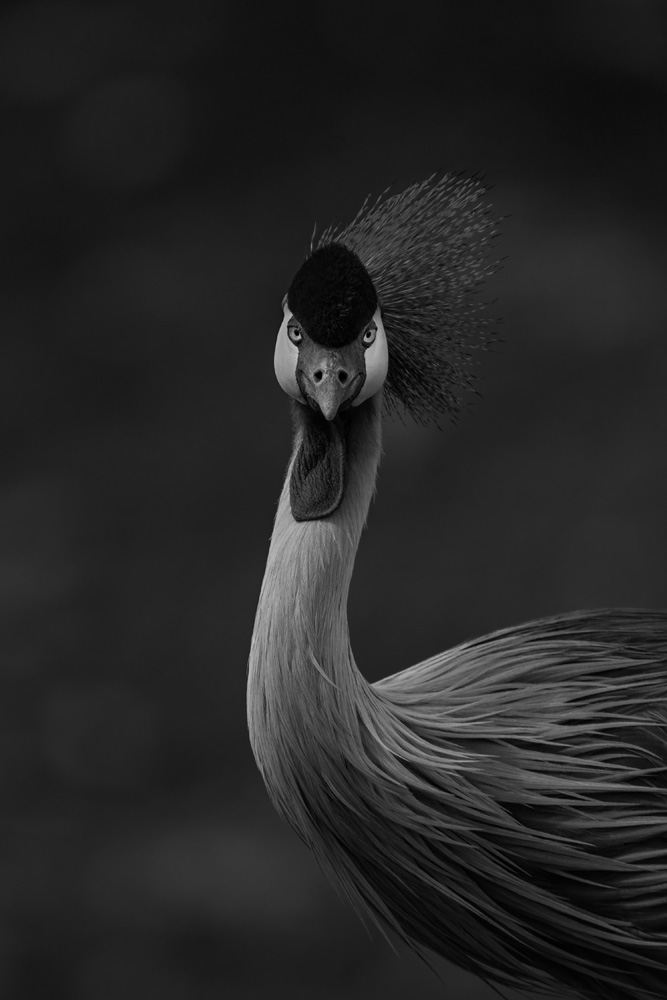
One of the great things about Mara North Conservancy is that you are allowed to get out of the vehicle (within reason, and when completely safe to do so!). For capturing shots of animals such as the Grey Crowned Crane, this freedom is invaluable in being able to be creative with compositions. While spending time with the Marsh Pride of Lions and Kweli with her three cubs was always exciting, a couple of hours spent lying on the ground observing a pair of Grey Crowned Cranes was easily one of the highlights of the project and resulted in ‘Crane I Help You?’ one of the most popular images in the collection. “They have the most expressive faces. Being completely alone watching them performing their beautiful courtship dance right in front of me was a very special experience.”
What developed over time?
The main things that developed over the course of the project were the specific ideas for compositions and finding ways to convey the animals’ individual stories; what they were experiencing at that stage in their life, the dynamics of their interactions, and the feel of the portraits. After all, how can you predict with any accuracy the feeling a portrait might have before you have met and got to know your subject.
“Compositionally, when trying the bring in the environment I would often scout an area first and then return day after day hoping to find an interesting subject. ‘Wanderer’ is a great example of this. I had already earmarked certain areas of Elicharro Plains as somewhere I thought would work really well for a more environmental shot. With the savannah grasses and iconic Acacia trees in the foreground, and the imposing Oloololo Escarpment in the background, all the shot needed was a subject. Edwin only appeared for a few days while passing through Mara North, and I spent most of those days with him as he steadily moved through Elicharro Plains.”
The importance of being proactive, not reactive
When spending day upon day with the same animals, or even just a few hours watching a single subject, you realise that some animal behaviours are predictable. Certainly not all of them, but many of them are. For example, when Kweli (the cheetah that features in the exhibition) was on the move she would often beeline for the next high spot such as a dead branch or a termite mound so that she could get a good lookout for potential prey. Recognising this meant Matthew could drive on ahead, select a spot to stop the vehicle with a good view of the lookout spot and a nice backdrop and essentially already have the shot completed, minus Kweli. Then, if she did climb the lookout, even if it was only briefly, he was completely ready to capture the image before she moved on.
“Wildlife photography has to be proactive in this way, not reactive. If you are always reacting to what has already happened, nine times out of ten you will completely miss the shot!”


Why photography matters
“As photographers, it is unfortunately undeniable that travelling to wild places will have some sort of impact. To me, as a wildlife photographer it is vital that I don’t just minimise the impact I am having, but actually support conservation initiatives that are fighting to reverse the years of devastation that humans have inflicted on the natural world. Photography and filmmaking are both powerful story-telling tools that help people connect to nature. The more people feel connected to it, the more people care, and ultimately this can only be a driver of positive change. While the exhibition has been on I have observed as people laugh when looking at ‘Kindred Spirit’, a photo of two cubs playing on top of a termite mound, and I have seen people cry while watching ‘Karibu Nyumbani’, the conservation film that accompanies the exhibition. It is these interactions that prove to me that photography and filmmaking can make a real difference.”
Matthew’s collection of images are much more than just snaps. They show the benefits and power of spending time observing behaviours to get a more intimate insight in the wildlife and the individual characters. It reveals nuances which you don’t get from a brief visit. As always with photography, taking time to look and understand the environment and its inhabitants make better images.
You can see more of Matthew’s work on his website: www.matthewwilliamsellis.com or his Instagram page @matthewwilliamsellis

